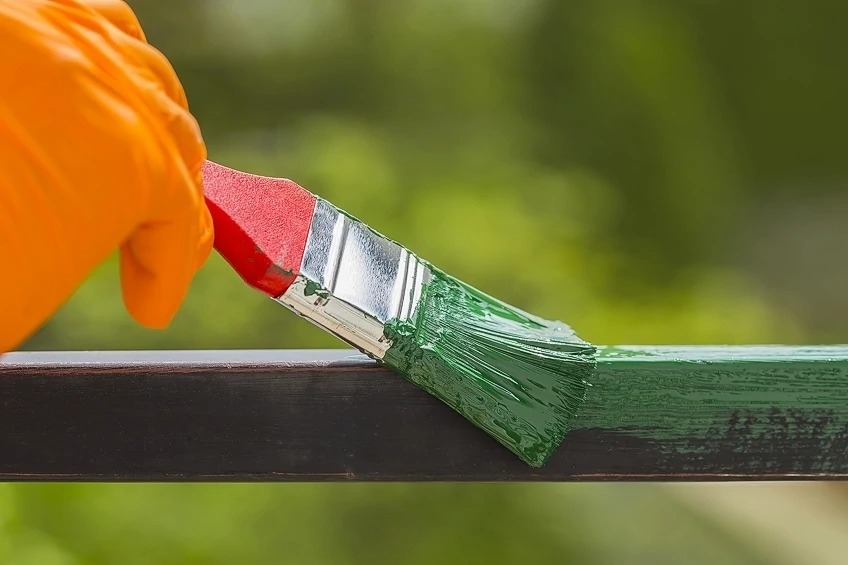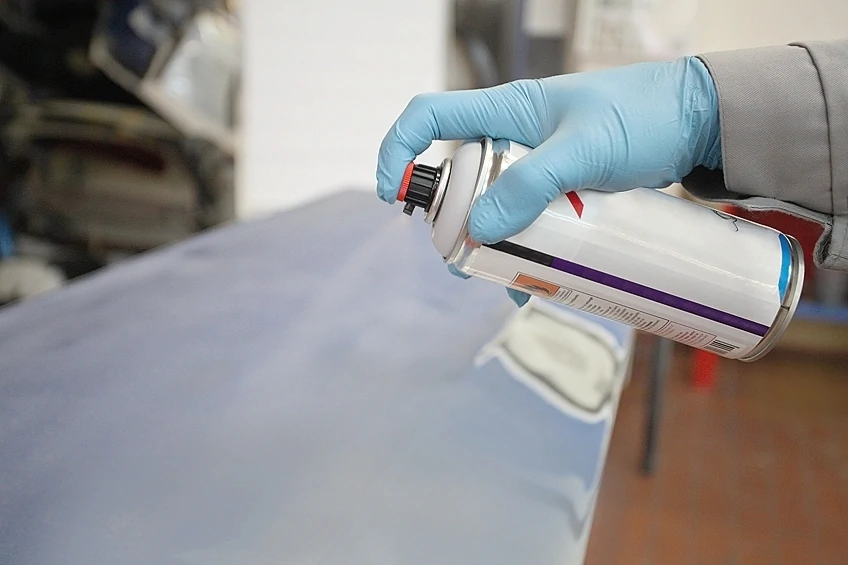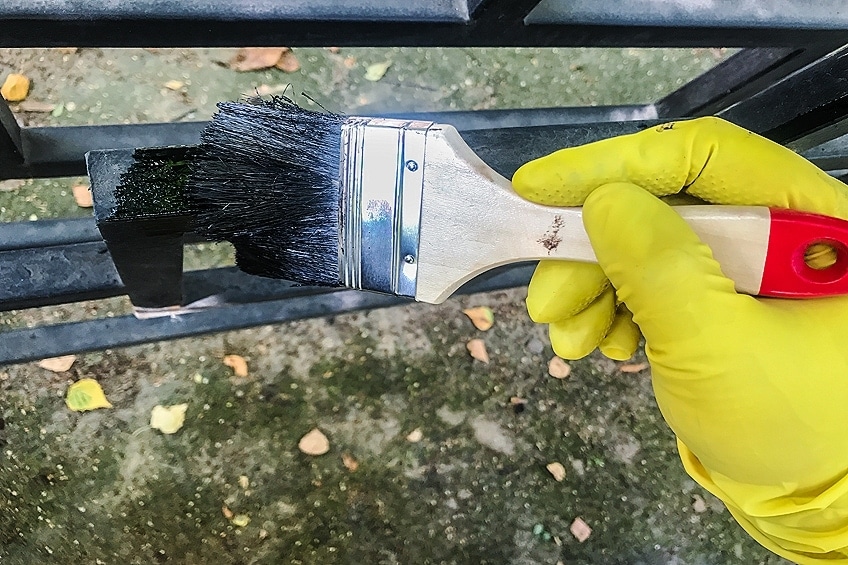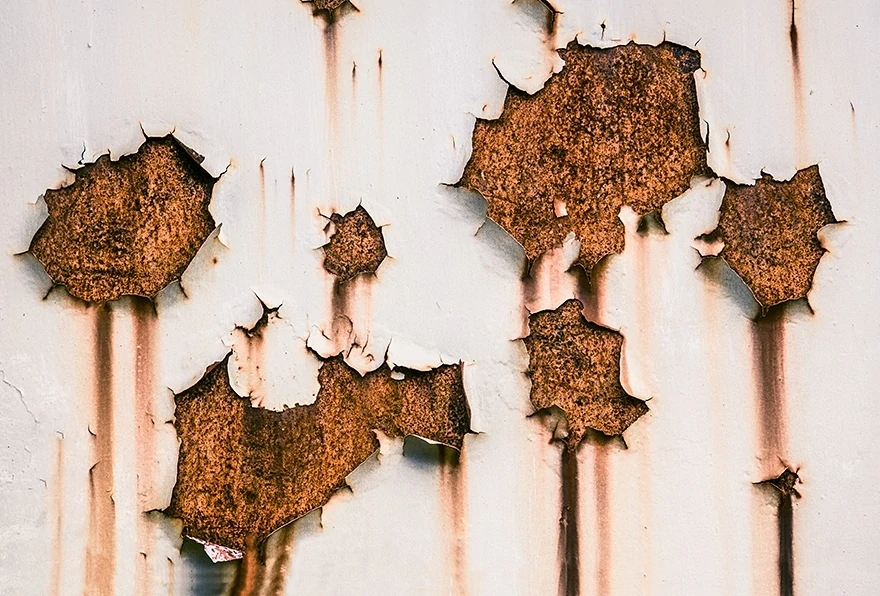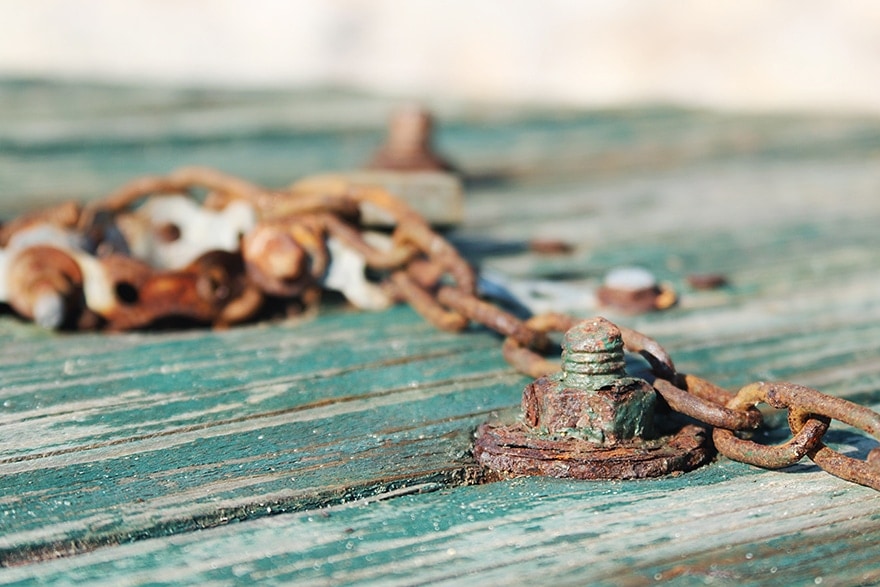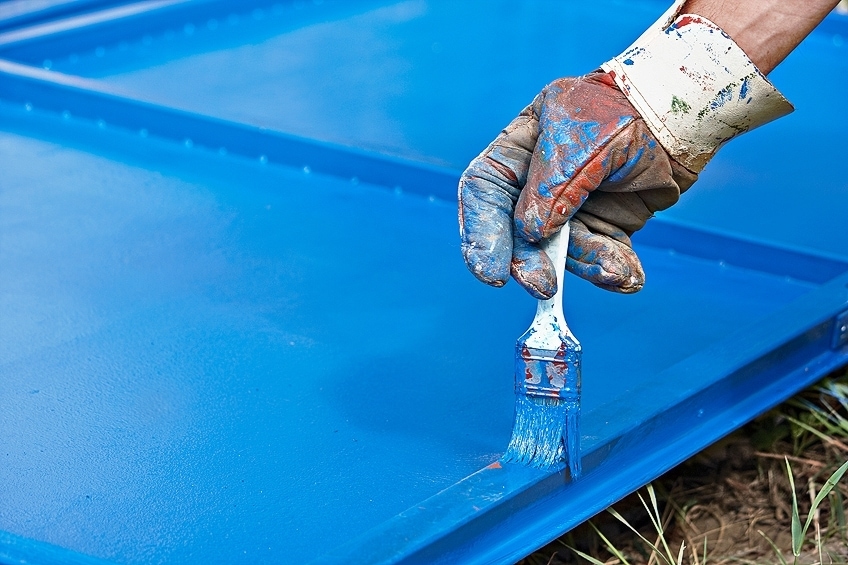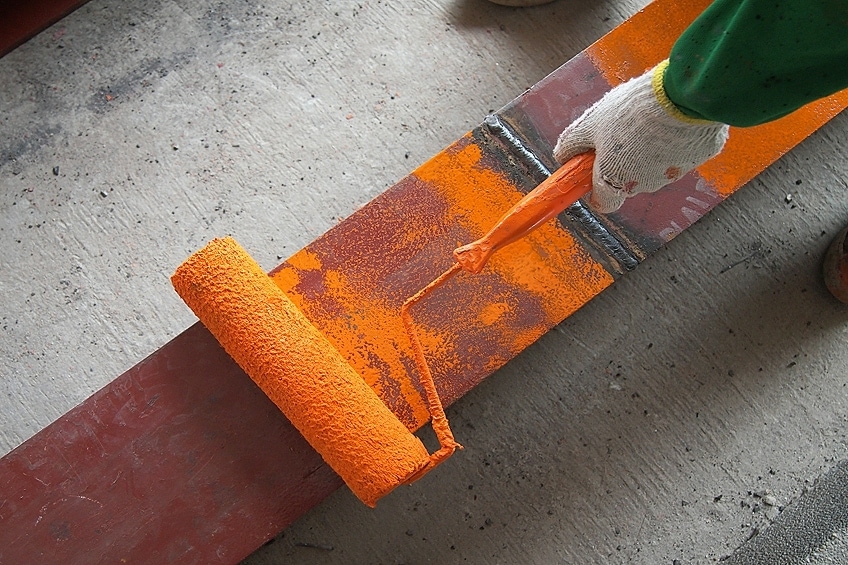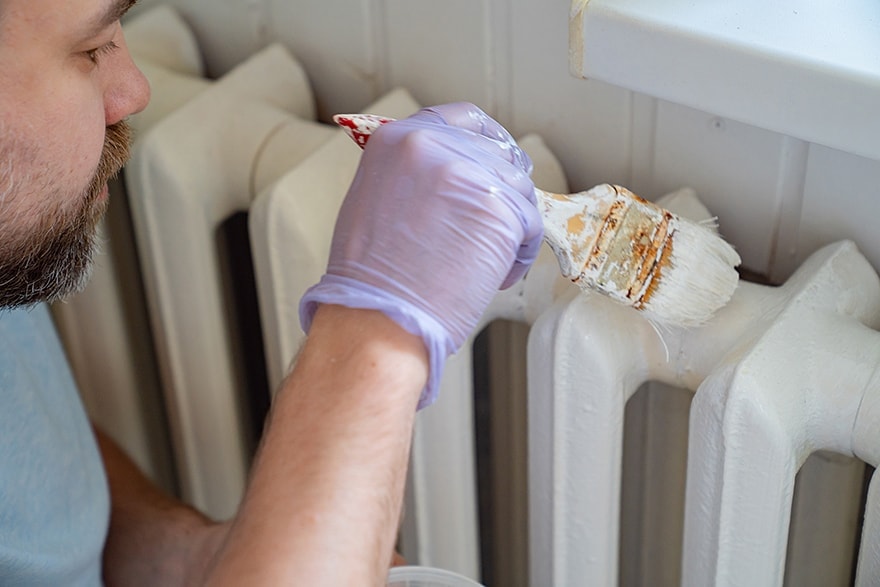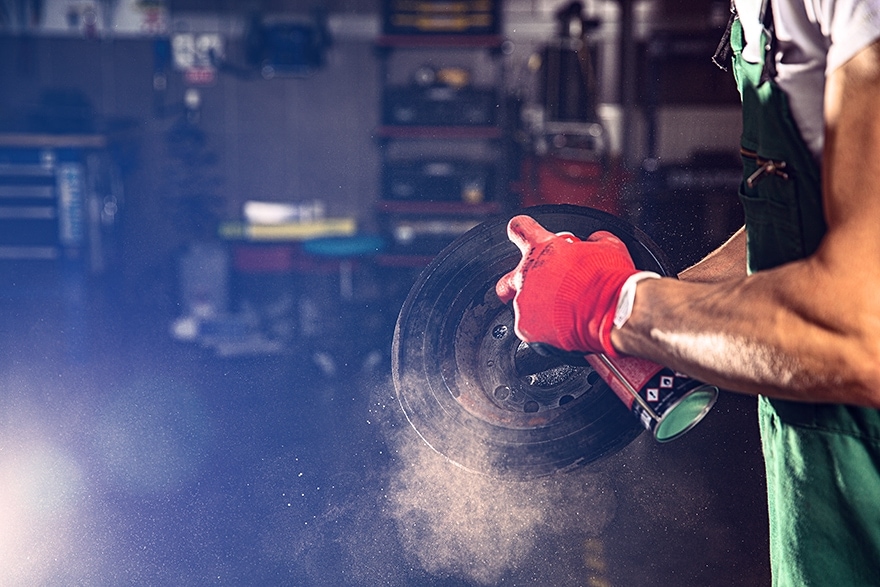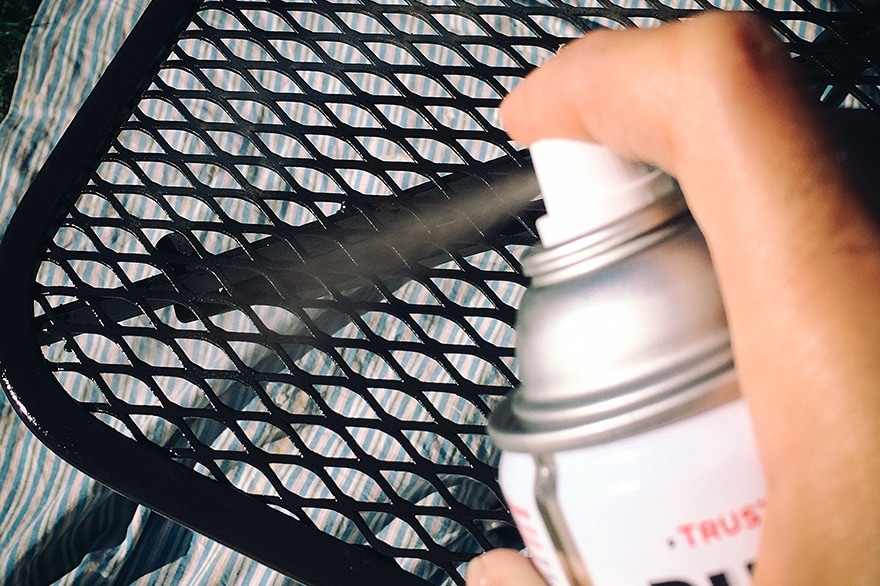How to Stop Rust – A Comprehensive Guide on Rust Prevention
This post may contain affiliate links. We may earn a small commission from purchases made through them, at no additional cost to you. You help to support resin-expert.com
Rust can have serious consequences for the appearance and properties of many materials. Metal objects in particular must therefore be protected from rust, but also from damage caused by weathering and aging. This can be done excellently with a high-quality rust prevention paint or spray. However, many questions arise for the inexperienced user, such as what the best rust prevention spray or paint is, and whether this paint can be applied directly to rust. We answer these questions in our rust protection paint test and guide.
Table of Contents
What Is Anti-Rust Paint?
Rust-proof paints are paints for metal that have a protective property against rust. Many of them promise – and deliver – years of protection. You can even apply a high-quality paint directly to rust, effectively preventing the damage from spreading. For some damage, however, you’ll need a rust converter before painting, as well as extensive prep work.
Rust is formed when the material reacts with oxygen in the presence of water. This is called oxidation. The metal becomes porous over time and loses form and function as corrosion progresses. A good rust prevention paint can protect the material from this for years.
A distinction must be made between passive and active protection:
- Active Corrosion Protection: Undesirable reactions with the environment are virtually replaced by a desirable reaction caused by the anti-rust spray or paint. An example of this is the component zinc, which acts as an anode substitute.
- Passive Corrosion Protection: The paint covers the material like a kind of protective film and preserves it from harmful environmental influences.
Advantages and Disadvantages of Rust Prevention Paint
PROS
- Easy application and therefore suitable for laymen
- Years of protection
- Resistant to many mechanical stresses
- Uncomplicated and fast-drying
- Mostly suitable for interior as well as exterior use
- Prolongs the life of metal objects
- Variations in the types of application
- Use as a private person as well as in the industry
- Differences in package sizes
- Wide range of colors
CONS
- Complications in the curing process possible if the weather is too hot or cold
- Difficulties in obtaining uniform coats of paint if no experience is available
- Problems with the execution of filigree painting works
- Need for elaborate preparatory work by some paint manufacturers
Areas of Application for a Rust Inhibitor Paint
The areas of application for rust protection paints are incredibly wide-ranging. Rust prevention paints, sprays, and lacquers can be used everywhere on rust-prone materials. Especially in the construction industry or the automotive industry, rust stopper paint is very popular, because with a single coat the material can be reliably protected and thus work cost-efficiently.
Rust inhibitor paint for cars is also perfect for home users to repair minor damage. Metal objects outdoors, such as stair railings, are effectively protected from long-term damage.
In drinking and wastewater systems, telecommunications, and other facilities, rust prevention paint has been a proven means of stopping destructive rust for many years. Rust stopper paint has also been used with great success in the transport of hazardous goods and in shipping.
Other areas of application include military installations, where a large number of metallic objects are naturally used.
What to Look for When Buying a Rust Prevention Spray or Paint
When buying rust prevention paint, you should pay attention to several things, because there are, depending on the manufacturer, large differences both in the price-performance ratio and in the type of application. The following things are important:
- How long is the drying time? This question is important because the smallest particles of dirt can adhere to damp paint and disfigure it. Furthermore, the drying time is of course important for any further steps, because only when the rust stopper paint has dried can the object be further processed or fully loaded.
- How resistant is the paint? Rust prevention paint is applied to heavily loaded surfaces in particular, as it is intended to protect against scratches, impact, and other stresses. Therefore, it is important to choose the paint appropriately according to the particular mechanical load. A high mechanical resistance of the rust protection paint is advisable in order to avoid any rework.
- How high is the weather resistance? This question depends, among other things, on whether the rust prevention paint is to be used indoors or outdoors. If the objects to be protected are mainly indoors or are protected from the weather by covers, it may be a paint with not quite as high a weather resistance. However, if, for example, the railing of an outdoor staircase is to be protected, the paint must have a solid to very good weather resistance. Here, as with the mechanical load, the following applies: If you paint cheaply, you paint twice. In addition, make sure that the paint has good UV resistance.
- How well can the product be processed? For professional craftsmen, this question may not be that vital, but for laymen in particular, it is of great importance. Good applicability and easy spreading are often worth their weight in gold. That being said, there are products available for brushing or those for spraying. Some are better for rolling, others for brushing. So the workability also depends on the object to be painted; this is especially true for delicate work as well as inaccessible parts.
- How strong is the odor? Since rust protection paint often includes solvents among its components, this is an important factor, especially when working indoors. Occupational safety in the form of a respiratory mask and good ventilation should therefore not be neglected. Adequate ventilation must also be ensured during the drying phase. However, low-odor rust-proofing paints are also available, only this factor must be seen in combination with good protective conditions. A low-odor paint is of no use if it does not adequately protect the underlying object.
- In which spectrum is the processing temperature? When painting outdoors, it is essential to pay attention to the right climatic conditions. If the temperature is very low or high, you should use a paint designed for such weather conditions. So pay attention to the minimum as well as the maximum processing temperatures of the anti-rust paint.
Instructions for the Application of a Rust Inhibitor
First, the manufacturer’s data sheet should be studied carefully. It states, for example, whether the paint used can be applied directly to rust or whether the substrate must be pre-treated. It also contains information on the subject of occupational safety.
In our rust prevention paint instructions, we assume that the substrate still needs to be prepared in order to give you a more comprehensive overview of the work steps.
Prepare the Substrate
Optimum preparation of the substrate is of utmost importance when painting. This applies in particular to metallic surfaces.
First, use strong strokes to brush the surface thoroughly with the aid of a broom or hand brush. Then use a wire brush to thoroughly clean the surface to be painted. For some objects, you should also remove loose plaster or rust with a chisel. Stubborn rust can be easily painted over with some specialized paint for rusty metal, but this depends on the paint used. Read the manufacturer’s data sheet to avoid unpleasant surprises.
Thorough cleaning is crucial for a good result
Caution is advised for load-bearing parts in the house or garage. If you suspect that the rust has already penetrated deep into the material and may have damaged it, be sure to call in a professional to inspect the material. In this case, DIY is strongly discouraged!
By the way, we have an insider tip for removing superficial rust: Cola is ideal for removing smaller rust stains or those that are only visible on the surface, thanks to the phosphoric acid it contains.
After the rust has been thoroughly removed, the surface must be cleaned of oil and grease. Use a universal thinner for this purpose.
After rust removal, you can still treat the surface with red lead. This is a mixture of resin and linseed oil, which develops rust-protective properties due to the reduction of tetravalent lead.
Repairing/Filling the Substrate
If the substrate has to be repaired, for example due to existing damage, a rust converter should first be applied and then filled. After the drying phase, a primer or the actual rust protection paint can be applied.
Apply a Primer for Adhesion
Paint or varnish does not adhere to bare sheet metal. Therefore, in many cases a primer must first be applied before the actual rust protection paint can be used. Such a primer is particularly advisable when working on a car. Adhere to the manufacturer’s data sheet with regard to application and drying time. We suggest using Rust-Oleum’s Automotive Sandable Primer Spray Paint, which offers is an anti-rust spray primer that will leave a smooth, flat finish onto which you can apply any topcoat.
Applying the Rust-Prevention Paint
After the drying phase, the rust protection paint can be applied. Clean the areas to be painted again using a hand brush to remove any new dust. Then apply the rust prevention spray or paint. Depending on the product and manufacturer, you can use a brush or a roller for this purpose. As far as the thickness of the application is concerned, products also vary, where some paints require very thick layers, while other paints need to be applied more thinly. In any case, pay attention to runners and noses!
To achieve the perfect rust prevention, some products may also need to be applied twice.
By the way, a good choice for metal painting can also be colored paint. This is suitable for both indoor and outdoor use, provides excellent protection, and dries extremely quickly.
Care
After the actual work, a hardener can be applied for maintenance. After that, it is recommended that you apply a lacquer sealant so as to perfectly protect the material from scratches and water penetration. You can repeat this procedure from time to time. On a car, regular waxing of the paint layer is recommended.
Interesting Facts About Rust Inhibitors for Radiators
Radiators require a special anti-rust paint, which is standardized according to DIN 55900. This is perfectly designed for the different temperatures caused by heating and can withstand even larger temperature fluctuations. We recommend using Rust-Oleum’s High Heat Spray Paint for radiators and automotive parts.
Important when painting radiators – as with any other painting – is the surface preparation. The entire heater must be cleaned – oil as well as greasy dirt should be carefully removed. For this purpose, nitro-thinner can be used.
After cleaning, in some cases, flaking rust and paint must be removed. This can be done with a sander or conventional sandpaper, depending on the size and structure of the surface to be sanded. It is recommended that you lightly roughen the object to be painted, even without visible damage, so that the paint adheres better.
Thoroughly brush off any dust and dirt that may have accumulated. Now, use a primer suitable for radiators for the undercoat, and then apply the topcoat. For this purpose, use a suitable radiator paint. In order to be able to paint hard-to-reach areas, use a radiator brush specially designed for this purpose or also a radiator roller. The latter is also known as a mouser.
If the undercoat is intact, you can wash it off thoroughly with ammonia water and apply the topcoat directly after it has dried completely.
If the old paint shows major damage, it must be removed with a paint stripper. Then proceed exactly as described above.
Interesting Facts About Rust Prevention in Cars
Cars are often exposed to extreme weather conditions. Whether rain, mud, sand, heat, or cold (especially for cars that are not parked in a garage and are also often driven off-road), high-quality rust protection is essential.
Cars are made of steel, which should be protected from rust with the help of galvanizing. Unfortunately, some manufacturers nowadays skimp on this very important form of rust prevention and protection. Apart from that, it can happen relatively quickly that a scratch occurs in the material and leads to smaller rust spots. For the vehicle owner, this does not seem to be a big problem at first; however, even a tiny rust spot can become safety-relevant after some time, namely when it continues to eat away at the metal unnoticed.
So, protecting your car from rust is a high priority. On the one hand, this can of course be done by a careful and adapted driving style. Furthermore, regular waxing of the protective paint is a great success factor.
If the rust has spread, you can proceed as described in the instructions above. The rust can be tackled with the aid of a rust converter, a grinder or sandpaper, and suitable rust protection paint. In any case, take care not to damage the surrounding paint.
It becomes somewhat more difficult if the parts to be painted are those on or around the engine block or exhaust system. In this case, the paint used must be able to compensate for large temperature differences without flaking off. A special rust protection paint for cars is therefore advisable here.
Painting Over Rust
There are rust converters available on the market that promise an optimum result simply by applying them to existing rust. In principle, this is possible. However, it should be kept in mind that a certain amount of phosphate content in the substance is required for reliable rust transformation. If this is not high enough, the existing rust cannot be removed.
In this case, the rust converter practically surrounds it with a protective layer and can continue its destructive work under this layer, unnoticed by the user. The result is extensive damage or even complete unusability of the object.
Of course, there is no perfect material. Despite the application of the rust converter, the existing damage will always be visible unless the object is treated further. The aim of a rust converter is generally to transform the rust into an iron phosphate layer, which can then be further processed.
So the bottom line is: even if it is possible in principle to simply paint over the rust with the help of rust converter, the safe option is to grind off large rust pockets and then apply rust converter. This also applies to three-in-one rust prevention paint products. Smaller rust pockets can be removed well by both rust converters and rust protection paint.
Safety Instructions
If you work with rust protection paint, occupational safety should always be your first priority. Rust protection paint contains various ingredients that can be harmful to human and animal organisms.
Study the manufacturer’s data sheet before application. Be sure to wear a respirator, safety glasses, and gloves when working. Protective nitrile gloves are recommended, as latex can cause allergies. Continue to wear long-sleeved clothing, and possibly even a protective suit.
Ensure optimum ventilation of your workplace. This also applies to the drying phase of the paint. If possible, work outdoors.
Frequently Asked Questions
What Is the Best Rust-Prevention Paint?
This question cannot be answered in a general way, as the criteria depend on the paint’s respective use. For example, whether it is to be used indoors or outdoors, the requirements for impact and scratch resistance, as well as the weathering and UV resistance of the paint must be taken into account.
What Is the Best Rust Inhibitor for Cars?
Answering this question is generally difficult, as the answer depends on the area to be protected as well as the type of damage. In general, however, the above-mentioned manufacturers are ahead of the game, even when it comes to rust protection for cars. One thing to consider is the large temperature differences that the paint may have to withstand.
What Is a Rust Primer?
A rust primer is a paint that acts as a primer for rust protection. It is a rust inhibitor and adhesion promoter that can be used inside or outside and optimizes paint adhesion. After 24 hours, it is dry and can be painted over with the actual paint.
There are major differences in the quality of rust-proofing paints. They also differ in terms of application. In general, however, it is possible even for inexperienced users to optimally protect their metal objects from rust. We hope we have been able to help you with our rust protection paint guide.


